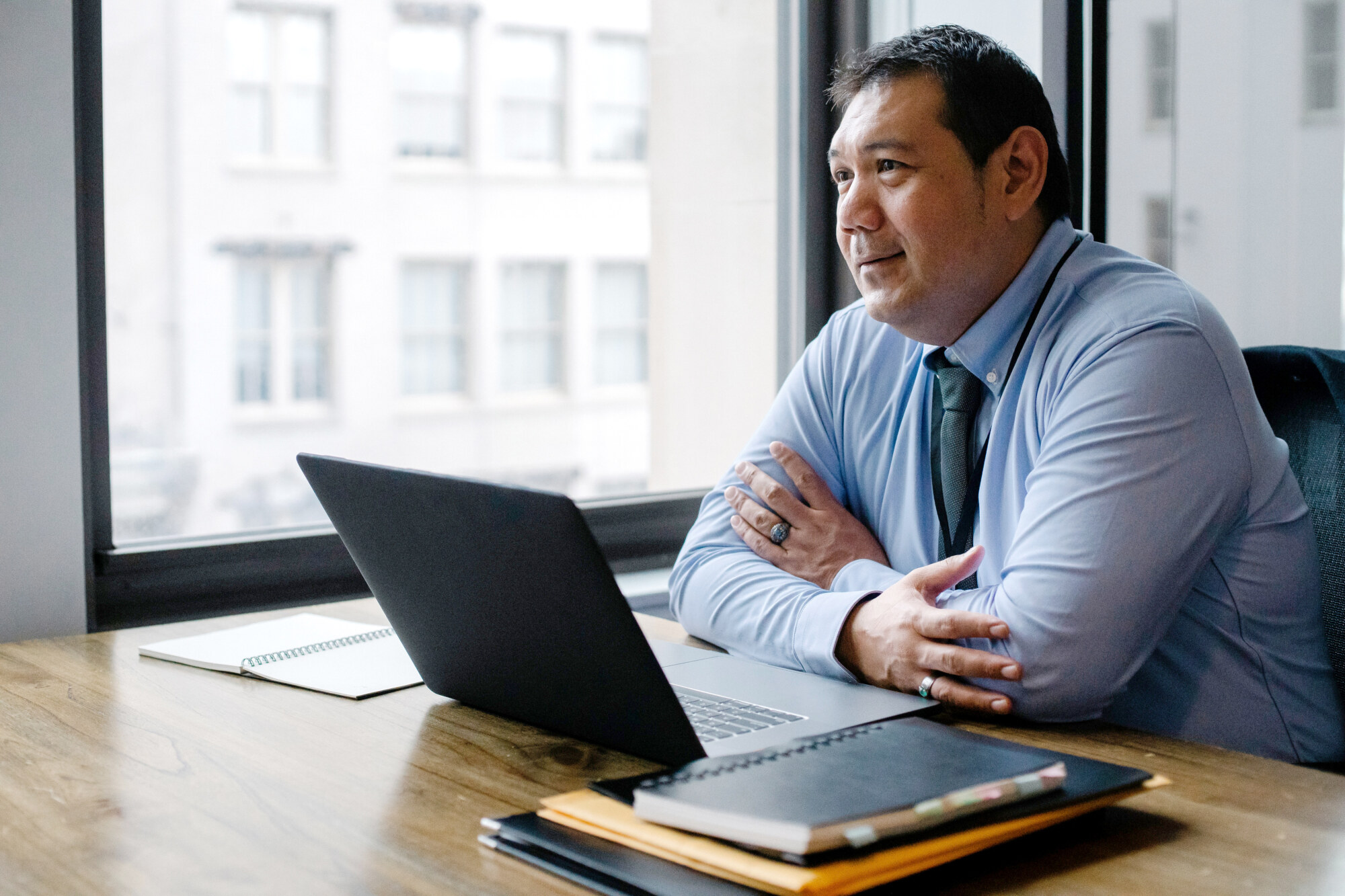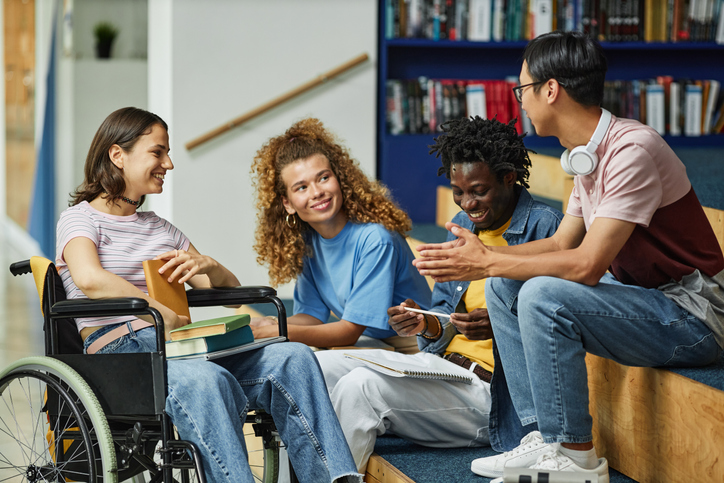Exposure to dangerous and violent situations can lead to emotional and physical reactions in both children and adults. When you experience trauma with your children, you face the challenge of helping them cope with difficult thoughts, memories and emotions while you, too, feel the effects of what has happened. How can you calm your children when you are not calm yourself?
Calm and strengthen yourself.
It’s important to recognise your own reactions to what has happened or is happening. It’s true that your children need you, but they also need you to be strong. If you pay attention only to their needs or the needs of others, you risk undermining and weakening yourself when you need to be thinking clearly and making smart decisions – for their sake and your own. Because your children depend on you, it’s important to take steps to calm and strengthen yourself:
- Observe what is going on with your body. Mentally scan your body: Do you have headaches, stomach aches, or pain in your neck or back? Are your abdominal muscles tense? Are you extra alert or exhausted? These are among the natural physical reactions to trauma.
- Pay attention to your emotions. Are you feeling anxious, angry, sad, fearful or emotionally numb? These and many other emotional reactions are also natural in the face of trauma and are closely linked to your physical reactions.
- Accept your physical and emotional reactions as real and valid. You may wish you were happy and relaxed, but those feelings may be unrealistic right now.
- Find ways to be alone. Sometimes you simply need to be by yourself. Try to find someone to watch your children, even if it’s just for a short time, and let yourself be alone.
- Use calming and grounding techniques. Reduce your tension when your feel panicky or frozen or when you are so sad, angry or fearful that you can’t think clearly or be supportive to your child:
- Breathe deeply. Count slowly to four as you inhale deeply through your nose and to four again as your slowly exhale through your mouth. As you breathe, feel the tension leaving your body. Humming to yourself can also calm your breathing, with an added calming effect from the music.
- Move your body. Take a walk or run, dance or stretch. Physical activity gets your circulation going and can help you shift your mind to different thoughts.
- Splash your face with cold water, or take a warm bath or shower. The sensation of cold water on your skin can interrupt feelings of overheated anxiety, while the feeling of warm water can soothe and relax.
- Give yourself a hug, hug your child (if hugs are welcome), massage your neck or tap your fingers gently on your chest while your arms are crossed. All of these are ways to feel the calming effects of touch.
- Use the 5-4-3-2-1 technique to tune in to your senses. Notice five things around you that you can see, four that you can feel, three that you can hear, two that you can smell and one that you can taste.
- Ask for help. That might be help with practical tasks, like shopping, cooking or the logistics of your next steps, or it might be help in dealing with your emotional reactions to the trauma. A good friend can help you talk through your feelings. A professional counsellor can help if you are stuck in negative thinking or if your emotional reactions are hurting your ability to function.
Your goal is not to be completely relaxed and happy. That’s not realistic right now. Instead, work on calming yourself enough that you can be a calming, reassuring presence for your children while also thinking clearly, being alert to real risks and dangers, and taking steps to keep your family safe.
Understand how your children might be reacting to the trauma.
Every person reacts to trauma in different ways. It’s natural to feel unsafe, afraid, angry, sad or confused, or to feel a mix of conflicting emotions. But how and when these feelings are expressed can vary tremendously from person to person. Some children, like some adults, may be tearful or have angry outbursts, while others may be withdrawn or emotionally numb. Some children may show emotional effects of the trauma right away, while for others the reaction may come days or weeks later. Beyond those individual reactions, children respond to trauma differently at different ages:
- Young children may be clingy, have trouble sleeping or be irritable.
- School-age children may have irrational fears, feel responsible for what has happened, act out or misbehave, or become extremely upset at times.
- Teenagers may feel helpless, see the world as an unsafe place, be angry at the unfairness of what has happened, feel guilt or shame, have trouble concentrating or engage in impulsive behaviours.
- Children of any age may regress to younger behaviours, no longer find pleasure in activities they once enjoyed, or feel their emotions in the form of headaches or stomach aches. Other children may act like ‘little adults’ at the cost of their mental health and sense of safety (a ‘paternalised’ reaction).
Ways to Help Children Cope with Emotional and Physical Reactions to Trauma
- Pay attention to and validate your children’s emotions. Accept them as natural reactions to a difficult experience. Validate them as genuinely felt, part of the child’s real experience, not something to hide or be ashamed of. Ignoring or dismissing their emotions can lead children to feel even more lost, alone and afraid.
- Do your best to be patient. Understand that behaviours that can seem irritating or bothersome to you may be part of a child’s emotional reaction to trauma. Regression to younger behaviours, clinging, acting out and misbehaviour are common childhood reactions to trauma.
- Don’t worry if your child’s reactions are different from yours, or from each other’s. One child might cry while another might not. One child might be withdrawn while another might be talkative and needy. Give them time to process their emotions while providing them with comfort and a sense of safety.
- Soothe and comfort your children with hugs, by letting them stay close to you, by singing to them or by telling a story. Provide extra reassurance that you are with them and will stay with them, and that when you go out, you will come back.
- Show your child simple self-soothing techniques. Many of the calming techniques for adults can work for children as well. Show them how you calm yourself with deep breathing, and practise together. Show your child how hugging a pillow or sitting with a pet can be soothing. Hum a song together, and show your child how humming to themselves can help them feel calmer.
- Encourage your children to talk about how they are feeling. Ask open-ended questions (ones that can’t be answered with just a ‘yes’ or ‘no’) and listen to what your children tell you. Ask them to tell you how they are feeling and where they are feeling it in their body. Use inviting phrases to encourage them to talk, like ‘Would you like to talk about it?’; ‘Can you tell me more about that?’; ‘I’m interested’ and ‘Go ahead, I’m listening.’
- Make the time to listen when your children want to talk. Listen to learn and understand. Don’t feel the need to respond to everything they say with an answer or solution. There may be none. Healing for the child starts with being heard, understood and loved.
- Be available. If your child doesn’t want to talk at first, that’s OK. Try again later. Be available by staying physically close to them.
- Be honest in answering their questions, but don’t overwhelm them with more information than they are asking for. Young children, in particular, may have limited or distorted concepts of what is happening. When they ask you questions, first find out what they know or think, then help address their concern with appropriate information. Be honest, too, in saying that you don’t have answers when you don’t. Explain that you are doing your best to find out and will tell them when you know more.
- Encourage young children to tell the story of what has happened through their play. Play-acting can be a way for them to work through their memories and emotions. If you play out their stories with them, you can learn what they are feeling and what worries them.
- Spend more time together. Come up with activities that you all enjoy, ones that can distract you all from disturbing thoughts or feelings and perhaps bring some smiles and laughs.
- Do what you can to establish daily routines. Consistent morning and bedtime routines and regular meals can be an anchor and a comfort in a disrupted world.
- Encourage your children to write, draw or express their thoughts and feelings in creative ways. This can help children process difficult experiences and emotions and may give you insight into their concerns.
- Talk about what’s good, using concrete examples. Remind your children that your cat is still with you, for example, or that you brought their backpacks. Tell them of people you read or hear about who are helping others and working to make things better.
- Don’t expect empathy from your children right now. They’re scared and focused on survival. They want to know that you are there for them. They don’t have the ability right now to be there for you. Don’t expect them to be brave for your sake, either. Be brave for them, and let them discover their own inner strength as they get through this difficult time.
When a Child May Need Additional Help
Just as you might benefit from additional help in processing your reactions to what you’ve experienced, so might a child. Seek the help of a professional counsellor if a child or adolescent
- Displays aggressive emotional outbursts long after the traumatic situation has ended
- Withdraws completely from family and friends
- Is unable to cope with routine problems or daily activities
- Engages in vandalism or illegal activities
- Expresses suicidal ideas
Reaching out for help is not a sign of weakness. A professional counsellor can offer solutions that may not be known to you.



































